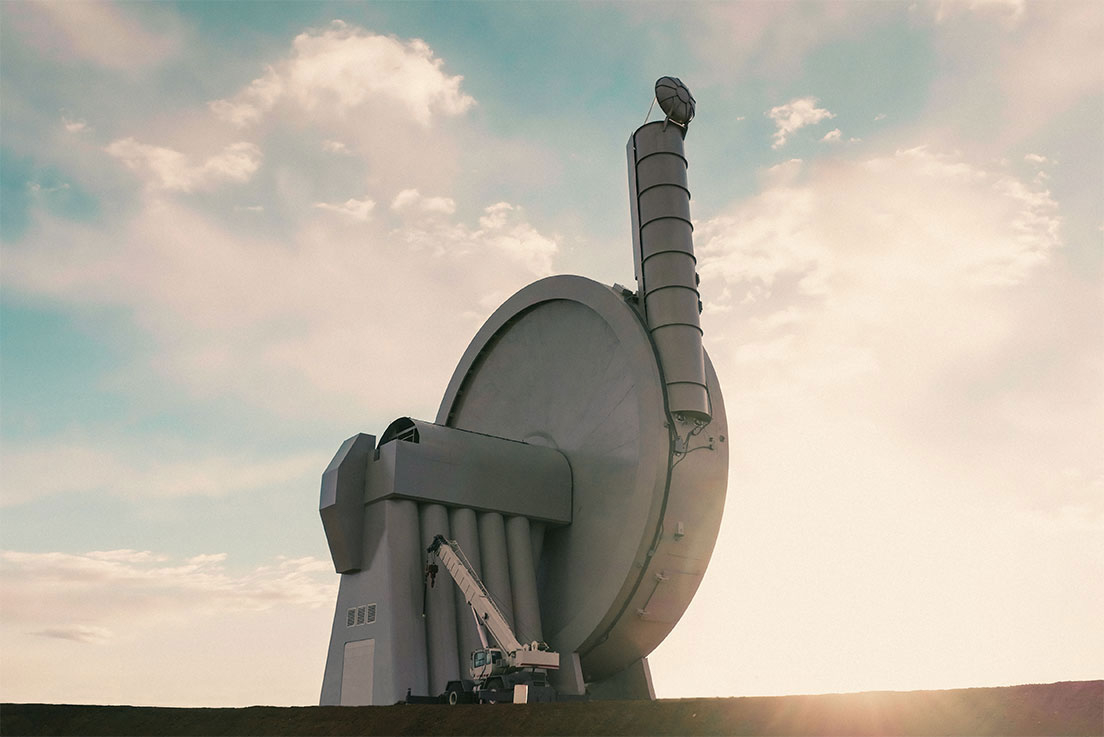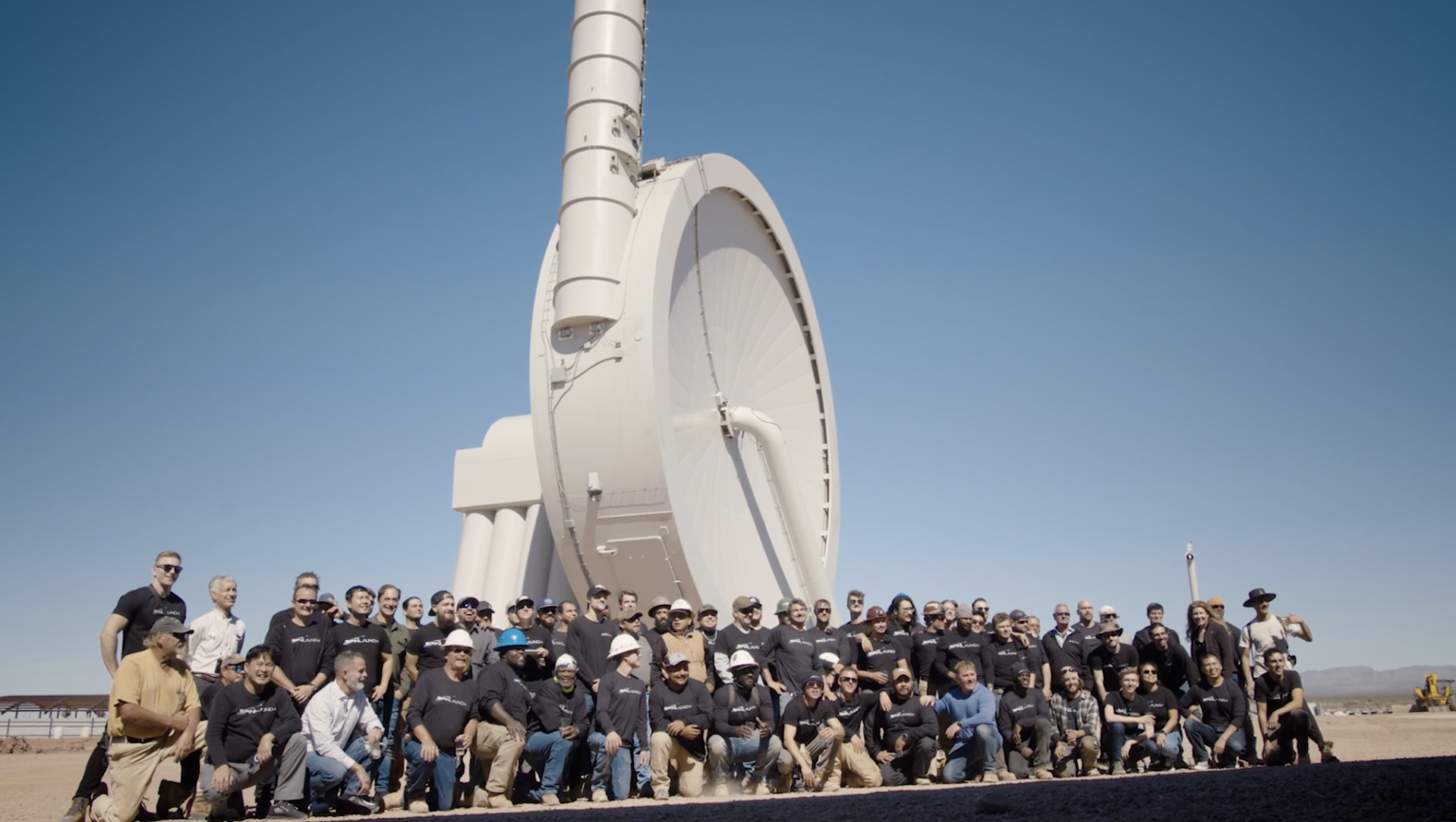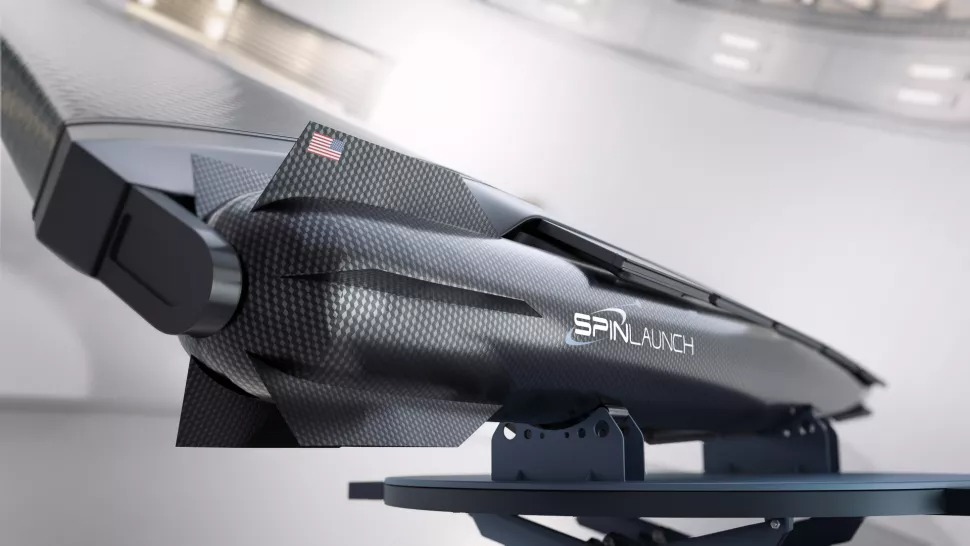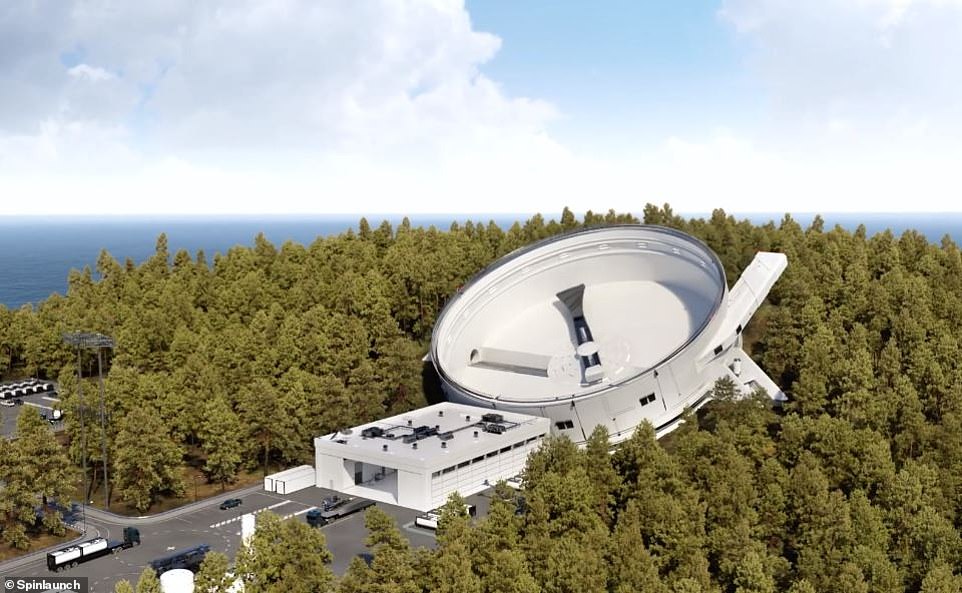NASA signed a contract with SpinLaunch for an experimental test flight of a rocket with a payload. If experiments prove that the “space gun” project is viable, it will allow the aerospace administration to save on rocket launches in partnership with the Californian company SpinLaunch.

The SpinLaunch suborbital launch complex was built in New Mexico. In October 2021, the first successful launch of a rocket model took place. Now, NASA signed up to test a huge centrifugal slingshot at the end of 2022.
Crazy idea has become a reality
SpinLaunch was founded in 2014 to develop an alternative to conventional rockets for reaching beyond Earth’s atmosphere. The built SpinLaunch launch complex looks pretty fancy. And it does not look like the usual spaceports. Externally, the structure resembles a huge yo-yo with a small chimney.

The essence of launching a rocket is to use the kinetic energy of centrifugal force to give acceleration instead of burning fuel. Inside the complex is a vacuum chamber with a diameter of 91 m. A payload attached to an internal carbon fiber arm is spun up to a speed of 8000 km/h. After reaching the peak speed, the arm throws the rocket through the tube straight into space.
“What started as an innovative idea to make space more accessible has materialized into a technically mature and revolutionary approach to launch,” said Jonathan Yaney, founder and CEO of SpinLaunch.

SpinLaunch will never be used to send people into space — overloads, when the lever is unwound, they are fatal to humans. The company’s target market is inexpensive and more readily available launches of small satellites.
SpinLaunch — Cheap delivery to space
The suborbital accelerator in New Mexico is just the beginning. The company has plans to build a coastal orbital launcher L100 to reach Earth’s orbit. The new complex will be three times larger than the one built in New Mexico. After pushing out from the gun and reaching the upper layers of the atmosphere, the rocket will activate a small engine that provides additional acceleration necessary for launching into a permanent orbit. The company hopes to perform its first orbital test flight as soon as 2025.

According to CNET

